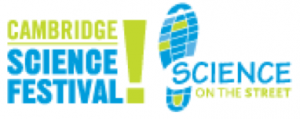MIT EAPS, News | April 12, 2016
MIT’s EAPS Brings Science into the Community with the Cambridge Science Festival

Cambridge, MA – MIT’s Department of Earth, Atmospheres, and Planetary Sciences (EAPS) celebrates the 10th anniversary of the Cambridge Science Festival with engaging, family-friendly science exhibits and demonstrations around Cambridge on April 22nd and 23rd. All MIT events are free and open to the public.
MIT appreciates the importance of understanding scientific fundamentals and the need for community outreach, so MIT’s EAPS is thrilled to announce that its professors, post-docs and graduate students will again host events to ignite curiosity and exploration around science. On Earth Day, MIT professor and oceanographers John Marshall and Glenn Flierl bring the world’s oceans to life at the MIT Museum’s “Diving into the Pale Blue Dot”. Earth and climate forces collide in Marshall’s tabletop water tank, where winds and the globe’s rotation work together to model large ocean currents and the north Pacific gyre. Meanwhile Flierl’s large computerized sphere, called the iGlobe, allows visitors to view the Earth as if from space. The iGlobe displays images and movies with real-time data of atmospheric storms, climate change, and ocean temperature. Using an iPad, visitors can alter the Earth’s rotation and orientation, and experience the interconnectivity of the world’s atmospheric and oceanic systems in response to climate change. In this way, Marshall and Flierl illustrate the importance of climate science and public understanding of it.
EAPS’ MIT professor Mick Follows offers a different perspective on the Earth’s waterways, inviting guests into a hidden world of marine organisms. With his microscope, Follows reveals lively ocean and freshwater ecosystems—the basis for aquatic food chains. Children and adults can observe copepods consuming phytoplankton in a petri dish, which is projected onto a white screen. Here, the Boston public can understand some biological interactions that are happening in their own backyard, like the Charles River and the Atlantic Ocean.
“We really love interacting with the public, particularly Cambridge residents who ask such well-informed questions about climate and the environment,” said professor John Marshall.
On April 23rd, MIT’s Department of Earth, Atmospheres and Planetary Sciences (EAPS) opens its doors to the public. In the EAPS lab, professor Marshall again displays the making of the north Pacific gyre. Out on the Walker Tennis courts, MIT meteorologist and lecturer Lodovica Illari showcases Aerocene, an interdisciplinary art project combining inflatable orb sculptures with science. Born out of a collaboration between MIT’s visiting artist Tomás Saraceno, MIT’s Department of Earth, Atmospheric, and Planetary Sciences and the MIT Center for Art, Science and Technology (CAST), Saraceno breathes new life into 1970s zero-energy “aerosolar” technology, in the form of large spheres that can float around the world, emission-free using heat from the sun and the Earth as well as the winds. And in a world that’s trying to cut dependency on fossil fuels, the group sees this, not only as a way to collect atmospheric data, but an inspiration for the future of travel.
This is the fourth time MIT’s Department of Earth, Atmospheres and Planetary Sciences (EAPS) has participated in the Cambridge Science Festival, and it will not be the last! A complete list of more than 150 events is listed on the Festival’s website here. Download the festival program app.
For more information contact Lauren Hinkel at hinkell@mit.edu or P.A. d’Arbeloff at padarb@mit.edu or 617-253-6847.




